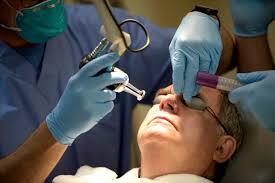Everybody has skin. (Yes, truly an amazing observation, but true.) Everybody is exposed to the sun – some more than others – so to some degree we're all equally subjected to the sun's benefits and potentially-harmful effects.
As for our epidermis-related differences, our skin color, of course, varies by race. Meanwhile, some population sub-groups are born with skin conditions that require attention that other groups do not have.
That said, what type of person is most likely to see a dermatologist? And who is least likely to do so?
We now have a clearer idea, based on the work conducted by researchers at Case Western Reserve University School of Medicine and University Hospitals Cleveland Medical Center. It's an effort encompassing nine years of data, collected between 2007 and 2015, derived from over 183,000 participants.
In a paper published online today in JAMA Dermatology, they've concluded that white, educated women are most likely to receive outpatient services. And on the other side of the magnifying glass, males who were "uninsured, Midwestern, from a lower income group, had a lower educational level, or had Medicaid or Medicare coverage were least likely to receive outpatient dermatologic care."
Overall, as compared to women, men were two-thirds as likely to seek dermatology treatment. And for both genders, as education as income increased so did the chances that a patient would seek treatment.
Those are the primary findings from this retrospective analysis, titled "Association of Demographic and Socioeconomic Characteristics With Differences in Use of Outpatient Dermatology Services in the United States."
As for those with the same skin condition but of different race, white patients were twice as likely to visit an outpatient dermatologist than those of African American or Hispanic descent.
"While other variables might have had an impact, ethnic disparities still persisted after the researchers controlled for education level, income, insurance status and sex. 'We were surprised by the magnitude of these differences,'" said Raghav Tripathi, MPH, the lead author and med student at Case Western Reserve, in a statement released by the Medical School.
What also surprised researchers was that of those diagnosed with a "dermatologic condition" 64 percent did not even act to have treatment during the nine-year period. They learned that roughly 90,000 patients in the study had a condition but just over a third of that group (36 percent) sought care.
Luckily, researchers found, that the patients most likely to visit a dermatologist "were those diagnosed with non-melanoma skin cancers." It is well known that early intervention is the best approach when it comes to heading off potentially dangerous skin conditions.




